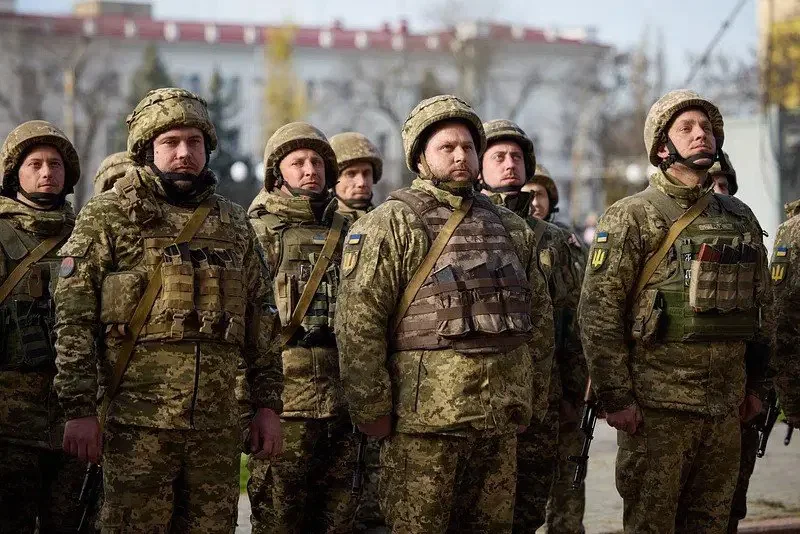Crimea’s Fuel Crisis: A Reflection of Russia’s Drone-Inflicted Predicament
Soldiers stand at attention in Crimea (Peter Huessy)
Oil prices in the Russia-annexed region of Crimea have risen by 40 to 50 percent over the past year, leading oil companies to activate “reserve capacity,” according to The Moscow Times. As of September 29, Russian authorities have begun rationing gasoline in the Crimean Peninsula. This reflects the growing fuel crisis plaguing not only Crimea, but the entire Russian Federation, as a result of Ukraine’s continuous drone strikes on Russian refineries since August. Almost 38 percent of Russia’s oil refining capacity is offline as of late September, which journalist Jason Corcoran of The Moscow Times terms a “humiliation measured in barrels and rubles,” given Russia’s status as an energy tycoon.
The Kyiv Post estimated that there have been a minimum of 21 attacks on Russian energy targets since the first of August, hitting more than 20 refineries. Out of the corresponding outages, about 70 percent were a direct result of drone strikes. Consequently, Russia’s refining capacity has plunged significantly. According to United24 Media, in September, “four major refineries were forced to halt operations after drone attacks,” including Kinef, the second-largest plant in the region. As a result, shortages now impact 20 percent of national consumption, forcing fuel rationing from “Kaliningrad to Vladivostok in the Far East,” according to The Moscow Times. The Far East and Crimea, where supply chains are the thinnest, were hit the hardest, with fuel stations capping sales at 30 liters per customer; in fact, half of Crimea’s gas stations have gone dry.
There is little Russian oil companies can do to resolve the fuel crisis. Repairs on plants are costly and lengthy, especially with sanctions blocking access to Western equipment. Moscow has scrambled to limit the extent of the crisis, banning exports of gasoline until the end of the year and trying to obtain emergency imports. However, the damage has been done, both physically and economically. Not only are fuel prices rising, but per United24 Media, “retail prices are climbing at 11-12% annually— the sharpest rise in seven years.”
This has only added to Russia’s deepening recession: VEB, the “state-owned development bank” projects a contracting GDP for two consecutive quarters, according to The Moscow Times. Russian state media has attempted to rectify the country’s image amidst this crisis, with Kremlin spokesman Dmitry Peskov insisting Russia remains stable. Deputy Prime Minister Alexander Novak assured citizens of the aid of accumulated reserves. However, as Corcoran writes in The Moscow Times, “no spin [of Putin’s] can mask empty pumps… not when complaints are spreading across Telegram of gas stations admitting to customers that there is no fuel.” Regardless of whether Moscow will succeed in halting the growing crisis, the strain of the Russo-Ukrainian war on Russia remains clear.

